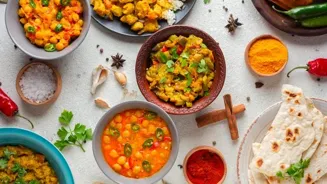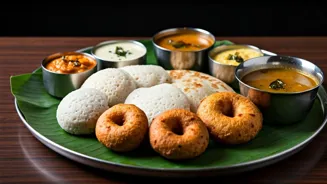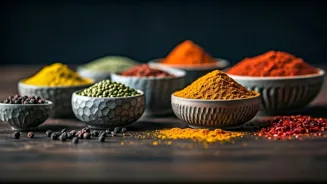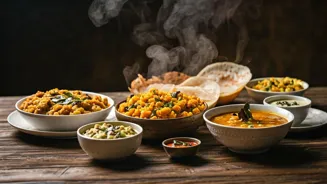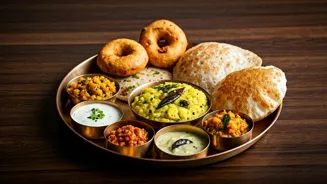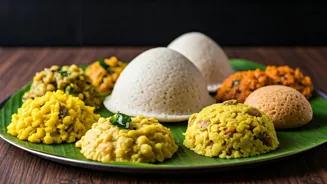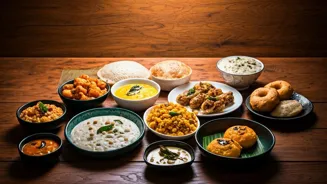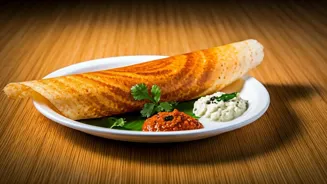Unraveling the Magic of Indian Fermented Foods: A Dive into 7 Unique Varieties. Discover the science behind these classics!
India, a land of vibrant culture and diverse culinary traditions, boasts a remarkable
array of fermented foods that have been part of our diet for centuries. These foods are not just delicious; they are also packed with health benefits, thanks to the magic of fermentation.
Fermentation, simply put, is a natural process where microorganisms like bacteria, yeast, or fungi convert carbohydrates into simpler compounds, creating unique flavors, textures, and nutritional profiles.
Let's dive into the fascinating science behind seven popular Indian fermented foods and discover why they are so good for you.
Idli and Dosa: The South Indian Staple
Idli and dosa, the quintessential South Indian breakfast, are made from a batter of fermented rice and urad dal (black gram). The fermentation process, which typically lasts for 8-12 hours, is crucial for the characteristic fluffy texture and slightly sour taste.
Scientifically, during fermentation, bacteria like Leuconostoc mesenteroides and Streptococcus faecalis break down the complex carbohydrates and proteins in the rice and dal.
This not only makes the nutrients more easily digestible but also increases the levels of essential vitamins like B vitamins. Furthermore, fermentation reduces the levels of phytic acid, an anti-nutrient that inhibits the absorption of minerals like iron and zinc.
Idli and dosa are therefore a nutritious and easily digestible option, especially beneficial for children and the elderly.
The fermentation process creates a unique texture and taste while simultaneously improving digestibility and increasing the levels of essential nutrients like B vitamins.
These are also lower in phytic acid, an anti-nutrient that inhibits mineral absorption. So, go ahead and enjoy these classic South Indian delights knowing you're treating your gut and body well.
Dhokla: A Gujarati Delight
Dhokla, a steamed savory cake from Gujarat, is another example of a delicious and nutritious fermented food. The batter, typically made from fermented chickpea flour (besan) or a combination of rice and lentils, undergoes a similar fermentation process as idli and dosa.
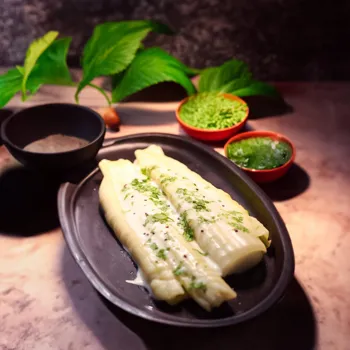
Bacteria break down complex carbohydrates and proteins, leading to the production of lactic acid. This lactic acid not only contributes to the characteristic tangy taste of dhokla but also helps to preserve the food and inhibit the growth of spoilage-causing microorganisms.
Dhokla is a light and fluffy snack that is rich in protein and fiber, making it a great option for those looking for a healthy and satisfying snack. The steaming process further enhances its digestibility and preserves its nutrients. Also, it is a healthier snack unlike fried ones.
Dhokla undergoes a process similar to idli and dosa with bacteria breaking down carbohydrates and proteins, producing lactic acid. This process enhances the digestibility and preserves the nutrients. Thus it's a healthier snack option.
Khaman: A Spongy Gujarati Snack
Similar to dhokla, khaman is another popular Gujarati snack made from fermented chickpea flour. However, khaman differs in its preparation and texture. It is typically made with a finer chickpea flour and is known for its light and spongy texture.
Fermentation plays a vital role in achieving this unique texture. During fermentation, the bacteria produce carbon dioxide, which creates air pockets in the batter, resulting in a light and airy product.
Khaman is often tempered with mustard seeds, curry leaves, and green chilies, adding to its flavor profile. This snack is not only delicious but also a good source of protein, fiber, and essential minerals. Like dhokla, khaman is steamed, making it a healthy and easily digestible option.
It’s enjoyed as a snack or a light meal in various parts of India.
The bacteria produces carbon dioxide during the fermentation, which creates air pockets in the batter, culminating in a light and airy product. This snack is a good source of protein, fiber, and essential minerals.
Kanji: A Probiotic-Rich Drink
Kanji is a traditional fermented beverage, often made with black carrots or beetroots, commonly consumed during the winter months in North India. The fermentation process is initiated by adding rai (mustard seeds) to the mixture.

The fermentation process not only gives kanji its characteristic tangy and slightly spicy flavor but also creates a probiotic-rich environment. Probiotics are beneficial bacteria that can improve gut health, boost immunity, and aid in digestion.
Kanji is a natural source of these beneficial bacteria, making it a great addition to your diet, especially during the winter when immunity is often compromised. So, if you're looking for a healthy and refreshing drink, give kanji a try!
Kanji consists of beneficial bacteria, which improves gut health, boosts immunity, and aids in digestion. It's a great natural addition to one's diet, specifically during winter when immunity is compromised.
Pazhaya Soru: Fermented Rice Water
Pazhaya Soru, which translates to "old rice," is a traditional dish from Tamil Nadu and other parts of South India. It is made by soaking cooked rice overnight in water, allowing it to ferment naturally.
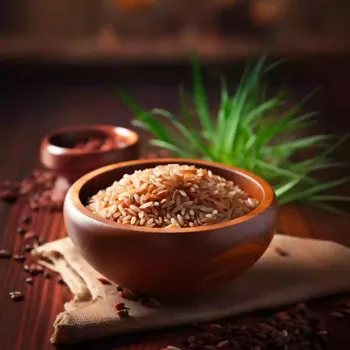
During fermentation, bacteria break down the starch in the rice, making it easier to digest and increasing the bioavailability of nutrients. Pazhaya Soru is also a rich source of probiotics, which can improve gut health and boost immunity.
It is traditionally consumed as a breakfast dish and is often served with yogurt, onions, and green chilies. This simple yet nutritious dish is a testament to the wisdom of traditional food practices.
The fermentation breaks down the starch in the rice, making it easier to digest and increasing the bioavailability of nutrients. Pazhaya Soru is also a rich source of probiotics, which can help improve gut health and boost immunity.
Sikki: Fermented Black Soybean
Sikki is a fermented food dish made with black soybeans. It is a local food of the Kirati Rai people of eastern Nepal and Darjeeling-Sikkim region of India. The preparation of sikki is very simple.

the soybeans are boiled in water, placed in a bamboo basket lined with fern fronds and covered with leaves, allowed to ferment thoroughly, and subsequently sun-dried for 3–4 days at a stretch.
It has been found to contain a number of healthful microbes and is one of the sources of vitamin B12 for the population.
Sikki contains healthful microbes and is one of the sources of vitamin B12 for the population.
The simple preparation of sikki includes boiled soybeans in water, placed in a bamboo basket lined with fern fronds and covered with leaves, allowed to ferment thoroughly, and sun-dried for 3–4 days.
Sel Roti: A Sweet Doughnut
Sel roti is a Nepali home-made ring-shaped sweet rice bread prepared specially during Dashain and Tihar, widely celebrated Hindu festivals in Nepal and Sikkim region of India. It is made of rice flour, sugar, and ghee.
The process involves fermenting the rice flour batter which creates a slightly sour taste and fluffy texture of the roti. Sometimes, flavors such as cardamom is added to the batter.
The fermentation of rice flour creates a sour taste to the roti.
These are primarily made of rice flour, sugar and ghee and is made during Dashain and Tihar, festivals in Nepal and Sikkim region of India.
The Power of Fermentation: More Than Just Flavor
As we have seen, fermentation is not just about creating unique flavors; it's about enhancing the nutritional value and digestibility of our food.
Fermented foods are a natural source of probiotics, which play a crucial role in maintaining a healthy gut microbiome. A healthy gut microbiome is essential for overall health, as it influences digestion, immunity, and even mental well-being.
By incorporating these traditional Indian fermented foods into our diet, we can reap the benefits of fermentation and support our overall health and well-being. These foods have been passed down from generation to generation, are a testament to the rich culinary traditions of India.
So the more we cherish these dishes, the better.
We cherish the importance of fermented foods on digestion, immunity and mental wellbeing. They're a natural course of probiotics, which are necessary to maintain a healthy gut microbiome.
These foods are a blessing passed on from generations for the betterment of Indians.
These are all beneficial foods.
